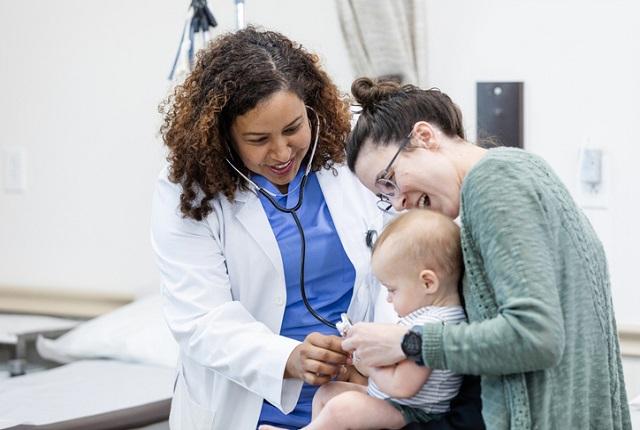
Peeling back stats behind U.S. primary-care shortage
New study charts alarming drop-off in training pathways for primary-care doctors.Media Contact: UW Medicine Media Relations, mediarelations@uw.edu
Amid growing shortages of primary-care physicians across the United States, a new UW Medicine-led study of the training pipeline shows large gaps that threaten equitable access to essential health services.
Researchers analyzed the educational trajectories of more than 350,000 U.S. doctors. They found that, although many begin training in primary-care specialties, many later shift to higher paying subspecialties — especially those in internal medicine and pediatrics.
“The U.S. has a persistent shortage of primary-care physicians, everywhere, and all the time,” said lead author, Dr. William Phillips, a clinical professor emeritus of family medicine at the University of Washington School of Medicine.
The retrospective-cohort study pushes back against the commonly held belief — and some say disinformation — that our nation’s medical schools are producing plenty of primary-care physicians, Phillips said.
The study was published in May in the Health Affairs journal.
Using data from the American Medical Association’s Physician Masterfile and Historical Residency File, the study tracked physicians from medical school graduation through postgraduate training. The findings highlight the need to clarify complex training patterns and address widespread misinformation shaping U.S. health workforce policy, Phillips noted.
The study examined 353,590 physicians who graduated between 2001 and 2015. Of those, 11.8% began training in family medicine, 33.5% in internal medicine, and 10.5% in pediatrics. However, while family medicine retained 97% of its trainees in primary care, only 35.5% of internal medicine and 54.4% of pediatrics trainees ultimately stayed in primary care.
“Initial specialty training doesn’t reliably predict a doctor’s career specialty," the authors noted. "Our findings show that many physicians leave primary-care pathways after completing internal medicine or pediatrics residencies. The highest yield pathway to producing primary-care physicians is through family medicine residency training.”
The study’s diagrams visually demonstrate these drop offs in specialty training and underscore the complexity — and fragility — of the primary-care workforce pipeline, Phillips noted.
A 2024 study by Association of American Medical Colleges found that, by 2036, the U.S. will have a shortage of between 20,000 to 40,000 primary-care physicians. The number will be even higher if funding to medical colleges does not improve, the report concluded. The National Center for Health Workforce came to a similar conclusion in its 2021 study.
As primary-care shortages intensify, the researchers urge further study to determine how many physicians who complete these training programs ultimately enter and remain in frontline primary-care practices. These insights are critical for designing effective, evidence-based solutions to strengthen the U.S. healthcare system, Phillips said.
Phillip’s time on this work was supported in part by the Pisacano Leadership Foundation, the philanthropic foundation of the American Board of Family Medicine, as a Larry A. Green Visiting Scholar at the Robert Graham Center for Policy Research in Primary Care and Family Medicine, Washington, D.C.
For details about UW Medicine, please visit https://uwmedicine.org/about.
